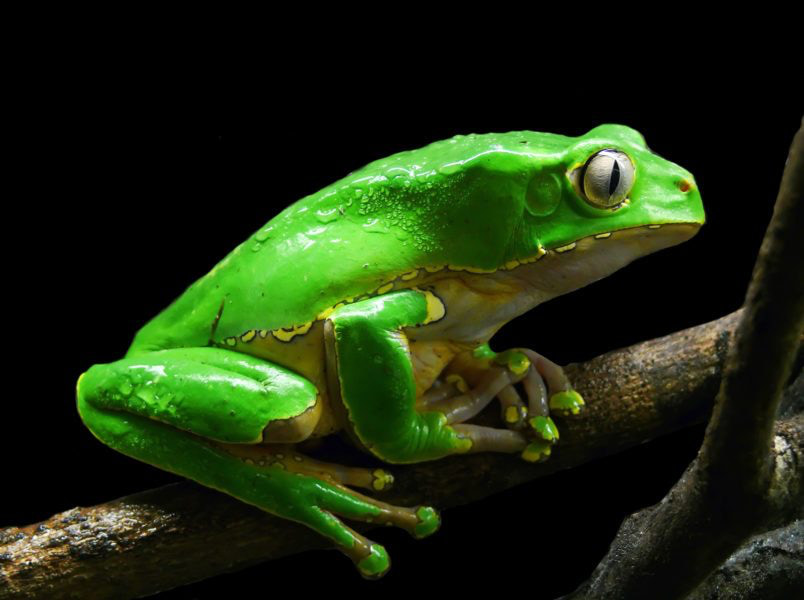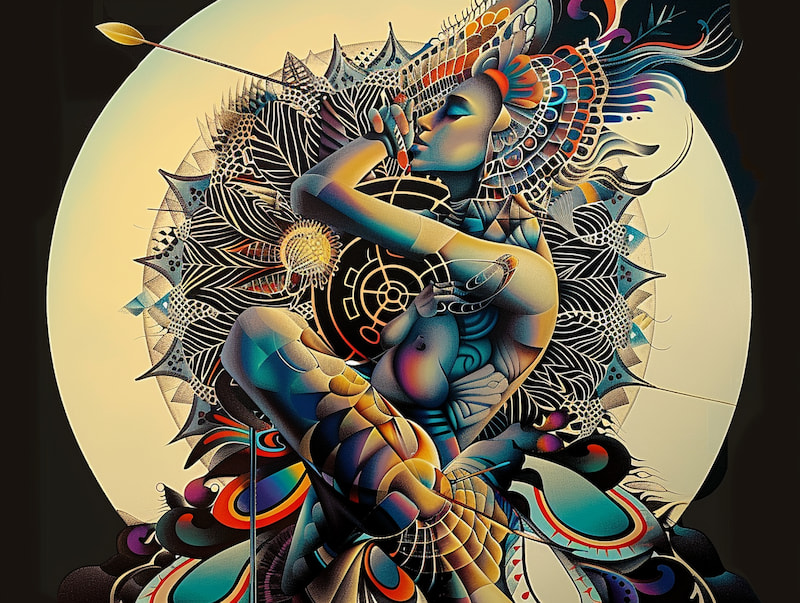Introduction to Kambo: Frog Medicine
This post is about Kambo, a medicine I receive many questions about and one with which I have extensive experience. It has taken me a few years to formulate my thoughts on Kambo, and by no means have I solidified any particular opinion. This is a complex topic and will require a bit of background for many to understand what I am writing, as it pushes up against the standard paradigms of thinking.
Kambo’s Origins
Kambo, also referred to as Sapo, is derived from the giant leaf frog (Phyllomedusa bicolor) found in the Amazon. Kambo contains a complex mixture of peptides, alkaloids, enzymes, minerals, and other compounds with potent physiological effects when introduced into the human body.
Kambo medicine finds its origins in the tribal shamanic traditions of several Indigenous peoples across the Amazon basin, including the Matsés, Kanamari, and Kaxinawá peoples of Brazil and Peru. Within their holistic medical paradigm, the tribes view illness as an energetic and spiritual imbalance impacting harmony with the natural and ancestral worlds. Kambo serves as a re-balancing folk medicine that cleanses, strengthens, and offers the recipient revitalized well-being through purging toxins and blockages believed to disturb one’s vitality.
Traditionally, tribal healers carefully harvest Kambo from the giant leaf frog in a ritual manner, paying respect and giving gratitude to the spirit of the frog. The process of administering the medicine is quite complex and can vary depending on the situation and custom. However, the most common methods of Kambo administration involve the following basic steps:
- Hydration & Cleansing – The recipient of the Kambo will typically be asked to fast for 12 hours or more prior to the ceremony. After opening prayers, clearing the space, and other similar practices, the recipient is usually asked to drink 2-4 liters of water. This may be done after step 2 below, or before, depending on the practitioner. The key is that the water is consumed rather quickly within a 15-minute time period.
- Burning – The Kambo practitioner then uses bamboo, incense, palo santo, or another smoldering wooden stick to lightly burn small areas of skin (called “gates”), the outermost layer being gently rubbed off to reveal the porous dermis.
- Application – Kambo secretion, which is stored on wooden sticks, is scraped with a knife, combined with water, and placed on the open “gates” created in the skin.
- Purging Effects – Within moments, heart rate rises as peptides absorb rapidly. Nausea, intense sweating, shaking chills, headaches, and other physical reactions may follow. These effects may peak around 10-30 minutes after application and usually pass soon after purging occurs (though sometimes no immediate purge happens).
- Depending on the practitioner, the use of songs, music, smoke/tobacco, or rapé snuff may be incorporated to facilitate the cleansing.
- Integration – After the purging is complete, the recipient will typically rest, and the Kambo medicine will be removed from the skin.
- Closing of the gates – A tree resin known as Sangre de Grado (Dragon’s Blood) is typically applied to the open gates to protect them and aid in their healing.
For many people, the next day often brings renewed focus, self-confidence, and reduced symptom burden compared to before the Kambo ceremony. Kambo is also used as preparatory medicine for other ceremonies such as Ayahuasca. Undergoing a Kambo purge prior to an Ayahuasca ceremony often enhances visions and may (for many people) make the Ayahuasca ceremony less challenging.
Bioactive Components – Peptides & Their Effects
From a biochemistry perspective, the primary bioactive components found in Kambo secretion are various peptides that interact strongly with the human nervous system, cardiovascular system, and inflammation pathways. These peptides include:
- Dermorphins – Natural opioid peptides reducing pain sensitivity
- Deltorphin, dermenkephalin, dermorphin – Modify immune function
- Phyllocaerulein – Gastrointestinal & pancreas effects
- Phyllomedusin – Tachycardia, vasodilation, diuresis
- Phyllokinin & physalaemin – Inflammation, antitumor
Kambo may also contain trace amounts of other bioactive compounds, though analyses vary. Combined in the secretion, these compounds can sometimes produce altered states of consciousness, although the main effects are as a strong purgative and stimulant of the sympathetic nervous system.
Background on the Sympathetic and Parasympathetic Nervous Systems
To understand the potential effects of Kambo on the body, I wish to explore the concept of the sympathetic and parasympathetic nervous systems through the lens of German New Medicine (GNM). This paradigm, developed by Dr. Ryke Geerd Hamer, proposes that diseases are caused by unexpected biological conflict shocks that manifest on three levels: the psyche, the brain, and the organ.
According to GNM, when an individual experiences a biological conflict shock, the body enters a sympathetic state, also known as the “conflict active phase.” During this phase, the body undergoes various changes to cope with the perceived threat, such as increased heart rate, elevated blood pressure, and the release of stress hormones like cortisol and adrenaline. In this state, the body is focused on dealing with the conflict, and various tissue adaptations occur.
Once the conflict is resolved, the body transitions into the parasympathetic state, or the “healing phase.” This is when symptoms may appear as the body works to repair any damage caused during the stress phase. The intensity and duration of symptoms in the healing phase are proportional to the severity and length of the preceding conflict.
This paradigm is exactly the opposite of the conventional medical paradigm. According to GNM, when symptoms appear, the body is not sick but is entering a prolonged state of vagotonia to heal the tissue adaptations made during the conflict active phase. Thus, sickness as it is perceived in our culture is not illness, but the body’s own healing processes at work. Also key to understanding this is that during the conflict active phase, there are no symptoms in most cases.
In the context of chronic conditions like chronic fatigue syndrome, Lyme disease, and others, GNM suggests that these illnesses may involve prolonged parasympathetic dominance. This could be due to unresolved biological conflicts that keep the body in a chronic healing state, leading to persistent symptoms.
Conventional medicines like steroids and glucocorticoids work by artificially inducing a sympathetic state in the tissues, effectively suppressing the body’s natural healing processes and temporarily alleviating symptoms. In essence, these types of medicines put the body back into a conflict active state and prevent the completion of the healing phase. However, this approach does not address the underlying biological conflicts, nor does it allow the tissues to go through with the healing phase the body seeks, and may ultimately prolong the healing process.
Kambo, with its potent stimulation of the sympathetic nervous system, may operate in a similar manner to glucocorticoids and steroids. By pushing the body and tissues into a strong sympathetic state, Kambo temporarily suspends the healing phase and its associated symptoms. This is the best explanation I have found as to why many people experience short-term relief from their symptoms following a Kambo ceremony. Although Kambo is spoken about as a “cure” for many things, including Lyme and Chronic Fatigue Syndrome, I have yet to witness anyone completely “cure” themselves of these dynamics using Kambo alone. To the contrary, I generally see these issues placed into remission temporarily for 2-3 weeks following Kambo, only to return as before. This strongly suggests that the relief being experienced is simply a product of the body’s healing processes being interrupted temporarily by the activation of the sympathetic nervous system.
Thus, it’s crucial to recognize that this relief may be fleeting. As the effects of Kambo wear off and the body returns to a parasympathetic state, symptoms are likely to resurface. This cycle of temporary relief followed by symptom recurrence may lead to a dependence on Kambo, as individuals repeatedly seek the short-term benefits without addressing the underlying causes of their illness.
From a GNM perspective, true healing requires identifying and resolving the biological conflicts that initially triggered the disease process. While Kambo may offer temporary symptomatic relief by inducing a sympathetic state, it is unlikely to provide long-term healing unless the underlying conflicts are addressed.
Furthermore, repeatedly forcing the body out of a parasympathetic state may actually hinder the healing process, as the body requires time in the healing phase to repair damage and restore balance. Until more research is conducted to elucidate the mechanisms and long-term effects of Kambo, I still recommend caution, particularly among those with chronic illnesses characterized by prolonged parasympathetic dominance.
Modern Usage of Kambo: Commercialization & Self-Administration
In recent decades, the use of Kambo has spread from isolated tribal use to much wider mainstream global interest. Knowledge of the ritual appears to have reached Europe in the 1980s and has now spread worldwide, including into the United States. As interest spread, the traditional slow rituals guided by knowledgeable elder healers diverged considerably from today’s typical usage. The vast majority of Kambo applied worldwide now originates from frogs commercially harvested in Brazil’s rainforest, lacking formal animal stewardship and sustainable practices. Other tribes, such as the Matses, are also significant exporters. There is concern by some that the demand worldwide incentivizes unsustainable collection practices that endanger the frog populations. This is not a concern unique to Kambo but is one that affects many of the medicines coming out of the Amazon basin.
Seeking help for debilitating diseases, chronic pain, PTSD, and spiritual cleansing, there are a significant number of aspirational practitioners who now offer Kambo in Western countries. Most operate without an ongoing relationship with a tribe, access to generational knowledge, or supervision.
To address safety issues, the International Association of Kambo Practitioners (IAKP) established certification standards for providers. Protocols aim for clean working environments, testing of frogs for contaminants, safety sitting procedures, emergency support training, and screening for contraindications and vulnerable groups. However, the fragmented Kambo movement suffers from inconsistent regulation, and the IAKP itself lacks oversight powers to enforce its own policies upon its registered practitioners. I have personally seen IAKP practitioners violate IAKP rules, and as an organization run by Kambo practitioners, the IAKP appears to serve more as a facilitator of trainings and provider of medicine to its practitioners than as an oversight board.
Recovery Attempts Pose Unknown Efficacy & Safety
The intense short-term stimulation makes Kambo intuitively appealing for sufferers of chronic fatigue, Lyme disease, chronic pain, depression, PTSD, and other inflammatory conditions seeking renewed vitality. Specialized peptides may modulate key drivers underlying illness.
Yet, while symptomatic relief frequently occurs up to 2-3 weeks post-ceremony, evidence of actual long-term healing remains severely limited. Indeed, it appears unlikely that Kambo offers anything more than temporary symptom relief for those going through deep healing processes that Western medicine labels as Lyme, ME/CFS, etc. These conditions are characterized by intense parasympathetic nervous system activation, indicative of healing processes that are hanging or stalled, likely due to recurrent psychological, emotional, or physical conflicts, along with elements of mineral imbalance and malnutrition.
In the communities that discuss alternative healing modalities, Kambo is often heralded as a panacea and “cure.” However, evidence of anyone becoming “cured” is scarce. To the contrary, it appears that most people who find relief from their symptoms with Kambo experience only short-lived periods of up to 2-3 weeks until their symptoms return. This is strongly indicative of a sympathetic nervous system push, which will shut off healing symptoms, increase energy, and enable better detoxification. After the sympathetic period passes, parasympathetic dominance returns along with symptoms, forcing the Kambo recipient to return for more Kambo treatments.
This can become a cycle of dependence that prevents healing. The body only heals in a parasympathetic state, so every time it is brought out of this state, the body’s healing is delayed.
Conclusion
Kambo is a complex medicine, and this post only discusses one aspect—whether it truly is a “cure” or merely offers temporary symptom relief. I have yet to observe Kambo cure anyone of anything, nor do I believe this paradigm makes sense. Whenever there is a healing or “cure,” it is our body that is doing the healing. Some practices support the healing process, while others turn it off. Kambo may do a little of both, and the key to understanding it and working with this medicine in a way that is supportive long-term may involve diving deeper into the interactions with the nervous system.
There is also an aspect of Kambo as a purgative that might help resolve active conflicts for some people in certain circumstances. The physical act of purging can itself be therapeutic, but this is also highly context-dependent and individualized. Not everyone benefits from purging in every case, so blanket statements are best avoided here.
It is essential to approach Kambo with caution and respect, acknowledging its traditional roots and the complex interplay of its bioactive components with the human body. While the short-term effects may be appealing, particularly for those suffering from chronic conditions, it is crucial to recognize that true healing requires addressing the underlying biological conflicts and supporting the body’s natural healing processes.
As interest in Kambo continues to grow, it is imperative that more research is conducted to elucidate its mechanisms of action, potential risks, and long-term effects. This knowledge will help inform best practices and protocols for safe and effective use, particularly among vulnerable populations.
In the meantime, those considering Kambo should carefully weigh the potential benefits against the risks and approach the medicine with a balanced perspective. It is essential to work with experienced, reputable practitioners who prioritize safety and have a deep understanding of the traditional use and modern application of Kambo.
Ultimately, the journey to healing is a highly individual one, and what works for one person may not work for another. Kambo may serve as a valuable tool for some, but it is not a panacea. True healing requires a holistic approach that addresses the physical, emotional, and spiritual aspects of well-being, and Kambo should be considered as part of a broader healing framework rather than a standalone solution.





